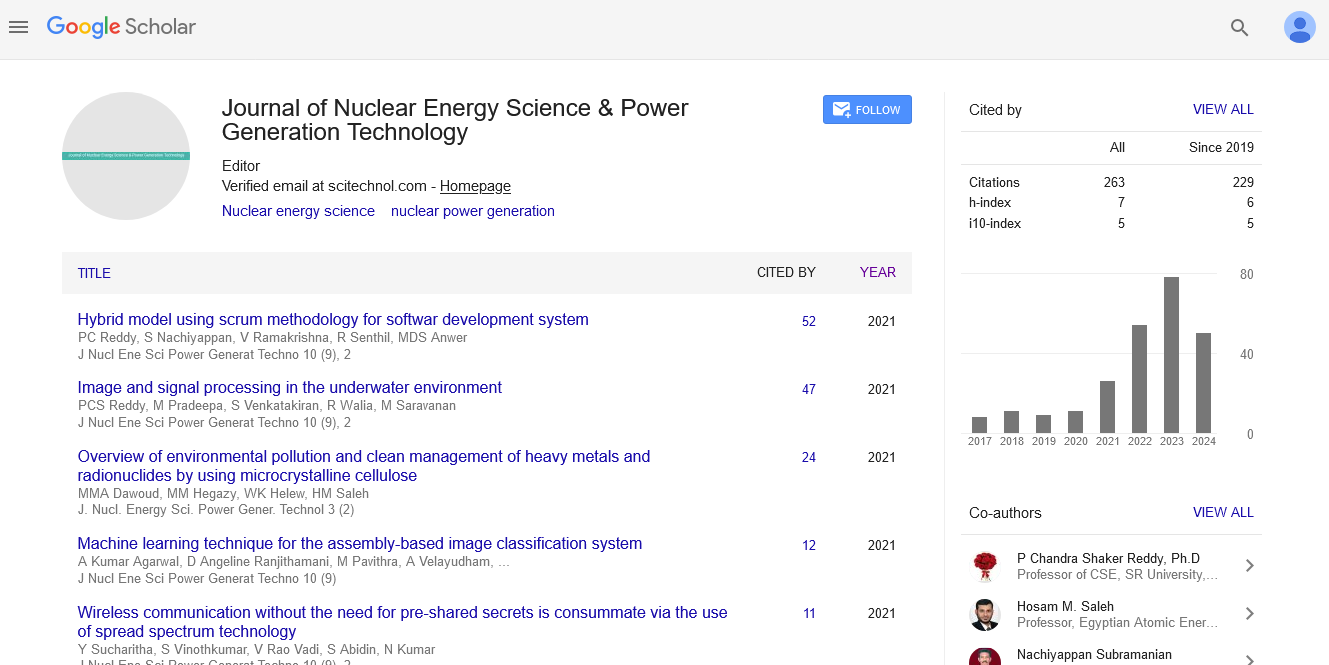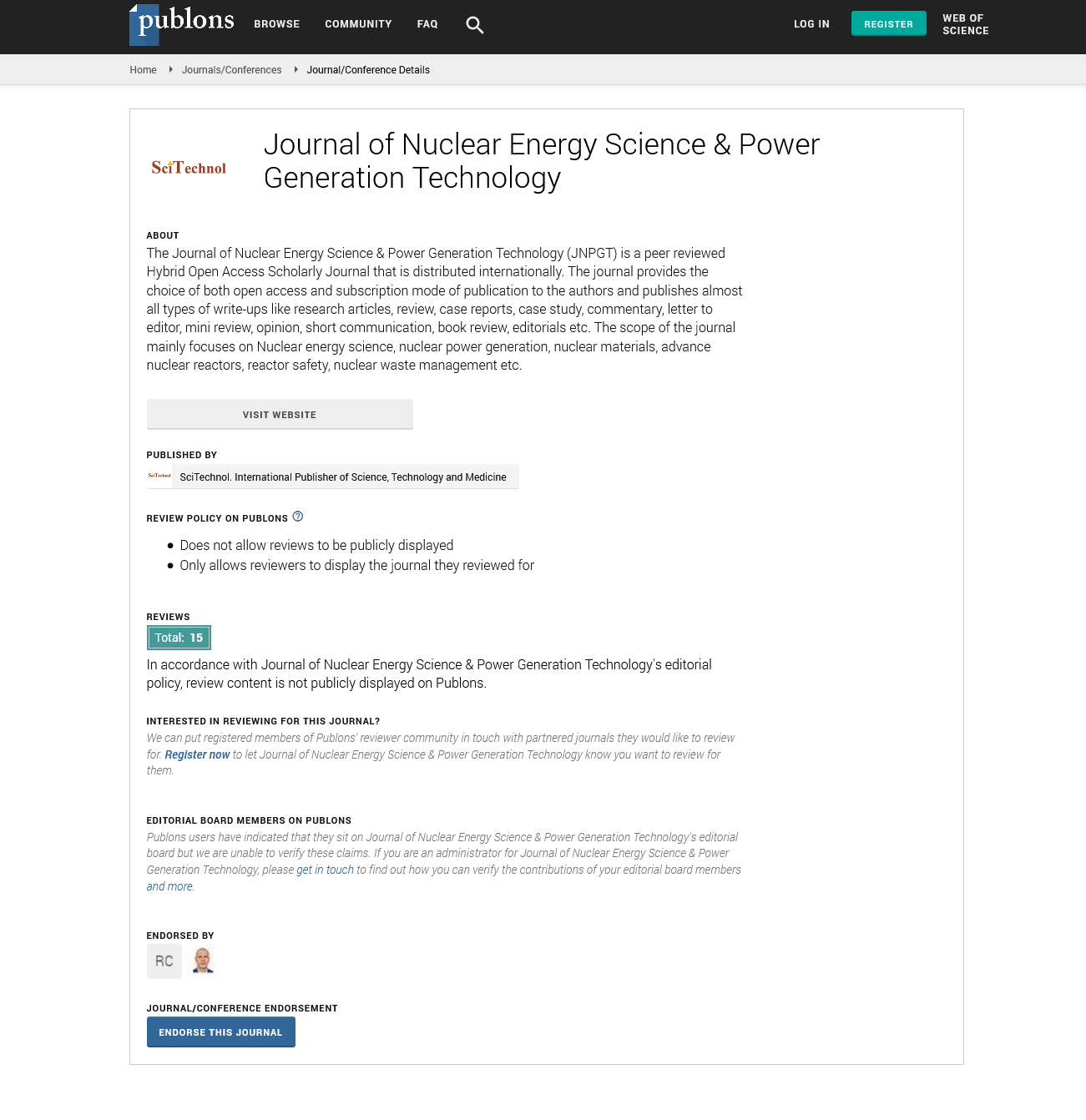Perspective, J Nucl Ene Sci Power Generat Technol Vol: 13 Issue: 5
Achieving Net-Zero Emissions and Role of Energy Security in A Low- Carbon Future
Tim Eignhnar*
1Department of Energy and Process Engineering, Norwegian University of Science and Technology, Trondheim, Norway
*Corresponding Author: Tim Eignhnar,
Department of Energy and Process
Engineering, Norwegian University of Science and Technology, Trondheim,
Norway
E-mail: tim_eignhnar@gmail.com
Received date: 26 August, 2024, Manuscript No. JNPGT-24-150417;
Editor assigned date: 28 August, 2024, PreQC No. JNPGT-24-150417 (PQ);
Reviewed date: 11 September, 2024, QC No. JNPGT-24-150417;
Revised date: 18 September, 2024, Manuscript No. JNPGT-24-150417 (R);
Published date: 25 September, 2024, DOI: 10.4172/2325-9809.1000420.
Citation: Eignhnar T (2024) Achieving Net-Zero Emissions and Role of Energy Security in A Low-Carbon Future. J Nucl Ene Sci Power Generat Technol 13:5.
Description
Achieving net-zero emissions while improving energy security has emerged as one of the most significant global challenges. Nations are dealing with the need to transition to low-carbon energy systems without risking their access to reliable and affordable energy. As governments, corporations and individuals try to address climate change, the interaction between decarbonization and energy security must be carefully managed. In this context, innovative strategies, emerging technologies and effective policy frameworks can help ensure both objectives are met. The concept of net-zero emissions refers to balancing the amount of Greenhouse Gases (GHGs) emitted into the atmosphere with the amount removed, either through natural processes like afforestation or technological solutions such as Carbon Capture and Storage (CCS). This is essential for limiting global temperature rise to 1.5℃ above pre-industrial levels. The drive for netzero requires a radical transformation of the global energy sector, which currently accounts for around 73% of total GHG emissions.
Role of renewable energy in achieving net-zero
Renewable energy plays a vital role in achieving both net-zero emissions and enhancing energy security. Solar, wind, hydro and geothermal energy provide clean alternatives to fossil fuels. By balancing up renewable energy production, countries can reduce their reliance on imported fossil fuels, improve their energy security and significantly cut their emissions. Renewable energy technologies have developed significantly in recent years with costs reducing and efficiencies increasing. Solar and wind energy, in particular, have become cost-competitive with and in some cases cheaper than, fossil fuels. Moreover, renewable energy can be produced locally, reducing the risks associated with geopolitical tensions or supply chain disruptions that often affect fossil fuel imports. However, the intermittent nature of solar and wind power is challenging to energy security. To moderate this, energy storage technologies, such as batteries and hydrogen play a key role. These technologies store excess energy produced during peak renewable generation times and release it when demand is high or renewable output is low. Investing in grid infrastructure and smart grid technologies is also essential to manage the variability of renewable energy.
In the short-to-medium term, fossil fuels will remain part of the global energy mix, especially in regions that heavily depend on them. However, decarbonizing these fuels is essential to achieve net-zero emissions. Carbon Capture, Utilization and Storage (CCUS) technologies provide a solution by capturing carbon dioxide emissions from power plants and industrial facilities and either storing it underground or using it in other processes. In addition, transitioning from high-carbon fuels like coal to lower-carbon alternatives like natural gas can provide a bridge to a fully renewable future. While natural gas is still a fossil fuel, it produces less carbon dioxide per unit of energy than coal. Policy frameworks are dangerous to initiative the transformation toward net-zero emissions and energy security. Governments must provide incentives for renewable energy deployment, set ambitious carbon pricing mechanisms and support research and development in energy technologies. International cooperation is also essential, as energy systems are increasingly interconnected across borders.
Conclusion
The global transition to net-zero emissions presents both opportunities and challenges. While decarbonization is essential for modifying climate change, energy security remains a fundamental priority. By investing in renewable energy, energy storage and infrastructure upgrades, countries can achieve both goals. A carefully balanced approach, supported by innovation and robust policies, will ensure that the path to net-zero strengthens rather than undermines energy security, enabling a sustainable and strong energy future investment in innovation is useful. Innov ativ e technologies, such as advanced nuclear power, green hydrogen and energy storage, embrace the potential to revolutionize the energy landscape. Governments and the private sector must work together to balance these technologies, making them commercially viable and widely available.
 Spanish
Spanish  Chinese
Chinese  Russian
Russian  German
German  French
French  Japanese
Japanese  Portuguese
Portuguese  Hindi
Hindi 

